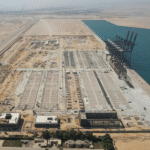The Connection Between Tankers and Bunkers in Fuel Logistics
In the world of marine logistics and oil operations, the terms “tanker” and “bunker” are often mentioned side by side. However, they represent two completely different aspects of the maritime fuel chain.
At Good Face Marine, we believe that understanding this distinction is vital for ship operators, port agents, and logistics professionals working across the global shipping industry.
What is a Tanker?
A tanker is a specialized vessel built to transport large quantities of liquid cargo safely and efficiently.
This liquid cargo may include:
- Crude oil
- Refined petroleum products (diesel, gasoline, jet fuel)
- Chemicals
- Liquefied gases such as LNG and LPG
Tankers feature advanced systems cargo tanks, pipelines, and pumps allowing secure loading, storage, and discharge across international routes.
What is a Bunker?
In contrast, a bunker refers to the fuel used by ships themselves to power their main engines and generators not the cargo they carry.
Bunkering is the process of supplying this marine fuel to vessels, whether they’re berthed at port or anchored offshore.
The operation can be carried out by bunker barges or fuel tankers that specialize in refueling ships.
Common types of bunker fuels include:
- Heavy Fuel Oil (HFO)
- Marine Gas Oil (MGO)
- Low Sulfur Fuel Oil (LSFO) compliant with IMO 2020 emission standards
Main Difference: Transport vs. Consumption
The core difference is simple yet significant:
- Tankers transport fuel and other liquids as cargo.
- Bunkers represent the fuel consumed by ships for propulsion and onboard power.
In essence, tankers are part of the global fuel logistics chain, while bunkering represents the final step ensuring vessels are powered for their next journey.
How Tankers and Bunkers Are Connected
Despite serving different purposes, the two are closely linked.
A tanker may deliver refined fuel oil to a port terminal. From there, bunker suppliers (like Good Face Marine’s partners) use smaller vessels or trucks to supply that same fuel to ships needing refueling.
So, while tankers move energy globally, bunkering delivers that energy directly to operating vessels.
Why Understanding This Matters
Knowing the difference between tankers and bunkers is essential across maritime operations:
- For port authorities: Ensures smooth and safe bunkering operations.
- For ship operators: Helps comply with international fuel and emission standards.
- For traders and logistics managers: Clarifies fuel movement vs. consumption responsibilities.
At Good Face Marine, our expertise in marine fuel supply, logistics, and ship services ensures our clients receive safe, compliant, and efficient bunkering solutions every time.
Conclusion
Both tankers and bunkers play vital roles in the global energy and shipping ecosystem.
Understanding how they differ and how they connect enhances coordination, safety, and efficiency across every port operation.
Good Face Marine continues to support shipowners, operators, and traders with trusted marine fuel solutions, ensuring every voyage begins with confidence.





